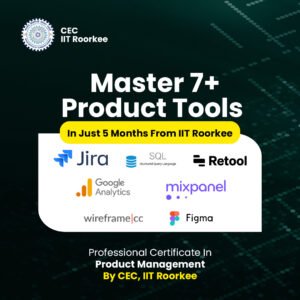Last updated on July 22nd, 2024 at 10:48 am
If you're gearing up for a product manager interview, it's natural to feel a mix of excitement and nervousness. Landing a Product Management role can be a game-changer in your career, but it also requires thorough preparation and a deep understanding of what the role entails.
The role of the product manager is developing, driven by the rising significance of data in decision-making, an increased emphasis on customer experience and design, and the continuous advancement of software development methodologies.
To help you shine in your next interview, we've compiled a list of the top 10 Product Management interview questions you might encounter in 2024, along with tips on how to answer them effectively.
1. Can you tell us about a product you've managed from inception to launch?
This question is often the opener in Product Management interviews. The interviewer wants to gauge your experience and understand your approach to product management.
How to Answer:
- Start with the problem: Describe the problem or opportunity you identified.
- Your approach: Explain the steps you took, including research, stakeholder engagement, and strategy development.
- Execution and outcome: Detail the execution process, the challenges faced, and how you overcame them. Conclude with the results and the impact the product had.
Example:
In my previous role, I led the development of a new customer feedback tool. We noticed a gap in how we collected and analyzed customer feedback, which impacted our product improvement cycles. I spearheaded a cross-functional team to research, design, and develop the tool. After six months, we launched it, resulting in a 30% increase in actionable feedback and a significant improvement in customer satisfaction scores.
2. How do you prioritize product features?
Prioritization is crucial in product management, and this question tests your ability to balance various factors to make decisions.
How to Answer:
- Frameworks: Mention any frameworks you use, such as RICE (Reach, Impact, Confidence, Effort) or MoSCoW (Must have, Should have, Could have, Won't have).
- Stakeholder input: Highlight the importance of aligning with stakeholders.
- Data-driven decisions: Emphasize using data and metrics to guide your prioritization.
Example: I use the RICE framework to prioritize features. For example, in our last project, I assessed features based on their reach, impact, confidence, and effort. This helped us focus on high-impact features that could be delivered efficiently. Additionally, I regularly consulted with stakeholders to ensure alignment with our business goals & customer needs.
3. How do you handle conflicting priorities from different stakeholders?
Conflicting priorities are common in product management, and your ability to navigate them is critical.
How to Answer:
- Communication: Stress the importance of clear communication and understanding each stakeholder's perspective.
- Negotiation and compromise: Show how you negotiate and find compromises.
- Decision-making: Illustrate how you make the final decision based on the product's vision and goals.
Example: When faced with conflicting priorities, I start by facilitating a meeting to understand each stakeholder's needs and concerns. I use data to highlight the impact of different priorities and negotiate a compromise that aligns with our overall product vision.

4. Describe a time you had to pivot a product strategy. What was the outcome?
This question examines your adaptability and decision-making skills when things don't go as planned.
How to Answer:
- Context and decision: Explain why a pivot was necessary.
- Steps taken: Detail the steps you took to implement the pivot.
- Outcome: Share the results and what you learned from the experience.
Example: In my previous role, we were developing a new feature that was initially well-received in user testing. However, early beta feedback indicated significant usability issues. We decided to pivot our strategy, simplifying the feature and focusing on core functionalities. This pivot resulted in higher user adoption and positive feedback post-launch, reaffirming the importance of agility in product management.
5. How do you measure the success of a product?
Measuring success is key to understanding the influence of your work and guiding future decisions.
How to Answer:
- KPIs and metrics: Mention specific Key Performance Indicators (KPIs) and metrics you use.
- Qualitative and quantitative data: Highlight the balance between both types of data.
- Continuous improvement: Emphasize the importance of using data to inform ongoing improvements.
Example: I measure product success using a combination of KPIs, such as user adoption rates, customer satisfaction scores, and revenue impact. Additionally, I gather qualitative feedback through user interviews and surveys to understand user sentiment.
6. How do you stay up to date with market trends and industry changes?
Staying informed is vital for a product manager to ensure their product remains competitive.
How to Answer:
- Continuous learning: Mention your methods for continuous learning, such as reading industry publications, attending webinars, and participating in conferences.
- Networking: Highlight the importance of networking with other professionals.
- Adapting knowledge: Show how you apply this knowledge to your work.
Example: I stay up-to-date by subscribing to industry newsletters, reading relevant blogs, and attending industry conferences. I also participate in local product management meetups to exchange ideas with peers. This continuous learning helps me identify emerging trends and apply them to our product strategy, keeping us competitive.
7. Can you give an example of how you used data to make a product decision?
Data-driven decision-making is a core skill for any product manager.
How to Answer:
- Context and data sources: Describe the context and the data sources you used.
- Analysis and decision: Explain how you analyzed the data and the decision you made.
- Outcome: Share the outcome and its impact on the product.
Example: In a previous project, we noticed a drop in user retention. I analyzed user behavior data and identified a bottleneck during the onboarding process. We redesigned the onboarding flow, simplifying it based on user feedback and A/B testing. This change led to a 15% increase in user retention within the first month, demonstrating the power of data-driven decisions.
8. How do you manage a product roadmap?
Managing a product roadmap requires balancing long-term vision with short-term goals.
How to Answer:
- Strategic alignment: Highlight the importance of aligning the roadmap with the company's strategic goals.
- Flexibility: Emphasize the need for flexibility to adapt to changes.
- Communication: Discuss how you communicate the roadmap to stakeholders.
Example: I manage the product roadmap by first ensuring it aligns with our strategic goals. I break down the roadmap into quarterly goals and regularly review it to adjust for new insights or market changes. Effective communication is key, so I hold quarterly roadmap sessions with stakeholders to ensure transparency and alignment.
9. How do you ensure the user experience (UX) is considered in your product decisions?
User experience is a crucial aspect of product management, and this question tests your focus on UX.
How to Answer:
- User research: Mention your methods for conducting user research.
- Collaboration with UX designers: Highlight your collaboration with UX designers.
- User feedback: Emphasize the importance of continuous user feedback.
Example: I prioritize UX by involving users early and often in the product development process. I conduct user interviews usability testing, and collaborate closely with our UX designers to ensure we're building user-friendly products.
10. What's your approach to launching a new product?
A successful product launch involves meticulous planning and execution.
How to Answer:
- Planning and strategy: Describe your launch planning process.
- Cross-functional collaboration: Highlight the importance of working with various teams.
- Post-launch activities: Emphasize the importance of post-launch monitoring and iteration.
Example: My approach to launching a new product involves detailed planning and cross-functional collaboration. I develop a comprehensive launch plan that includes marketing, sales, and customer support strategies. During the launch, I coordinate with these teams to ensure a smooth execution. Post-launch, I monitor key metrics and gather user feedback to make necessary iterations. This approach has helped me successfully launch several products, each with positive user reception and strong market performance.
The Final Words
Preparing for Product Management questions requires a blend of self-awareness, knowledge, and strategic thinking. By understanding these top product manager interview questions and answers & crafting thoughtful, data-driven responses, you'll be well-equipped to demonstrate your expertise and land your dream role. Remember, interviews are not only about showcasing your skills but also about demonstrating your passion for product management courses and your ability to drive impactful results.
Become a Certified Product Manager with IIT Roorkee and Imarticus Learning
The Product Management course by CEC, IIT Roorkee, in collaboration with Imarticus Learning, is specifically curated for young professionals aiming to start their careers in Product Management.
The IIT Roorkee-designed curriculum, combined with Imarticus Learning's expertise, helps learners master the entire product lifecycle, from development to positioning, pricing, and deployment. This 5-month live product management course allows learners to build a product from scratch, accelerating career growth and enhancing their portfolios.
To become a New-Age Product Manager, one must have a strong understanding of the modern product development process, which includes various stages such as ideation, research, design, development, launch, & post-launch evaluation.
Enroll Now and Kickstart Your Career in Product Management with IIT Roorkee and Imarticus Learning!








